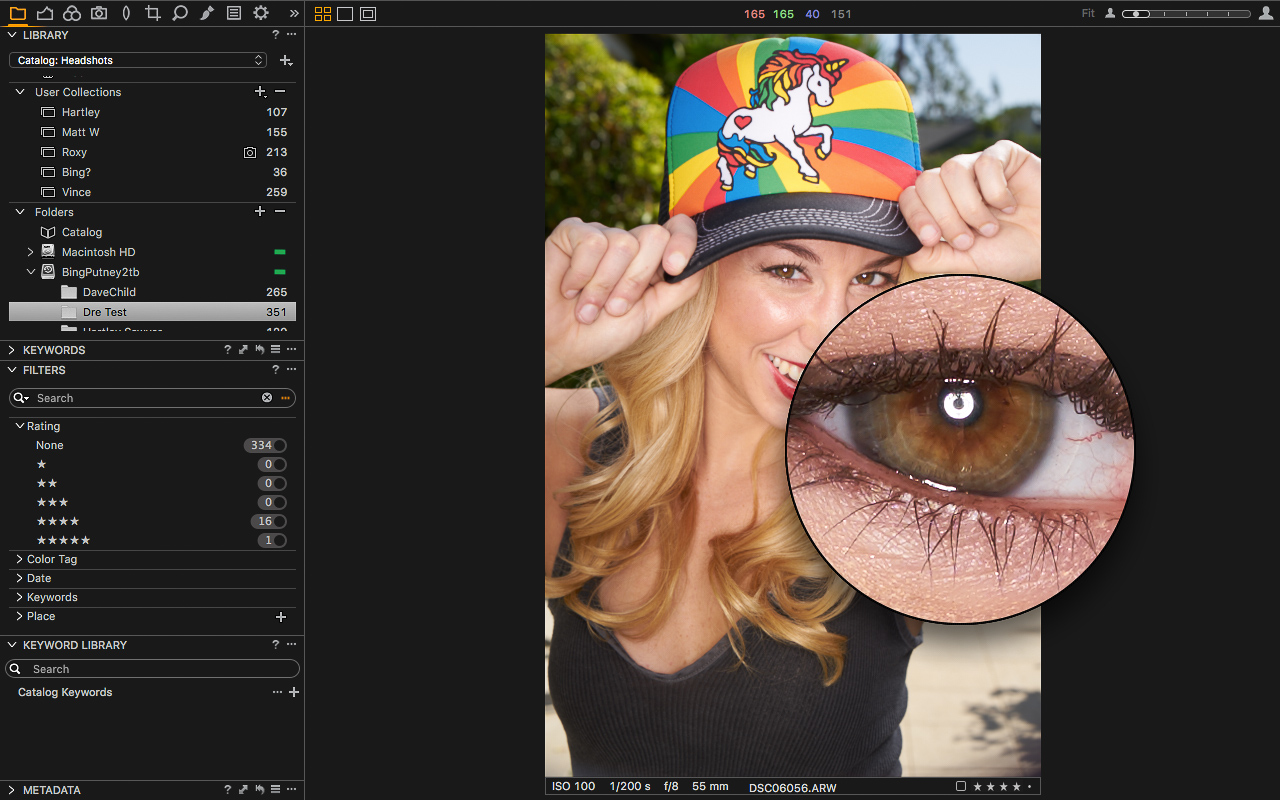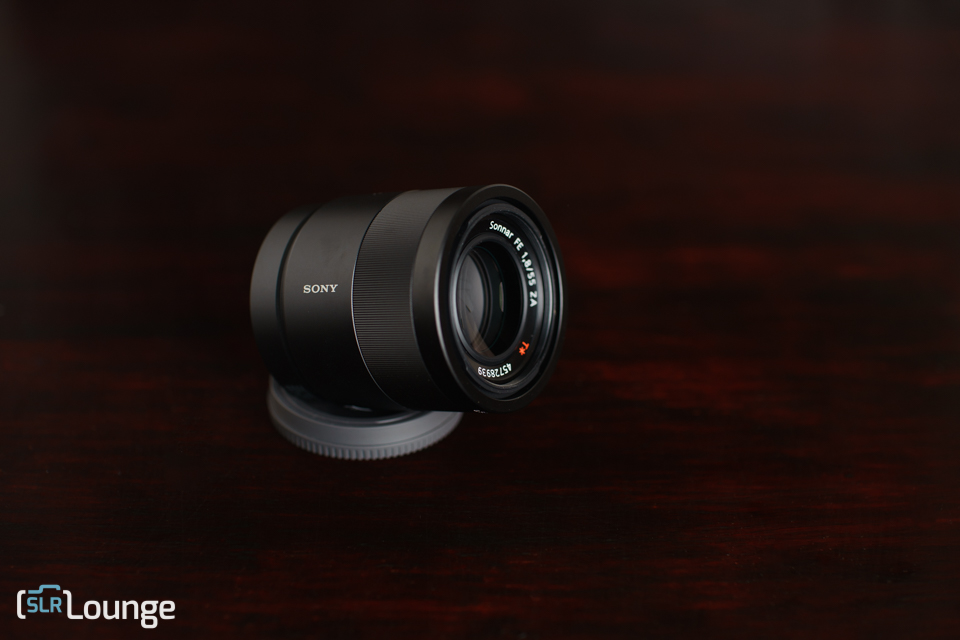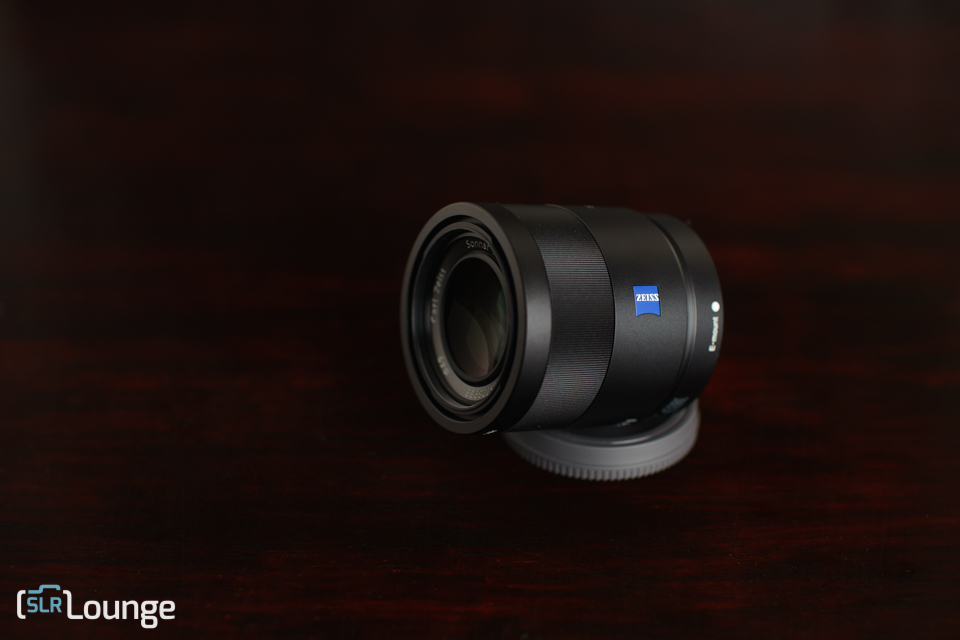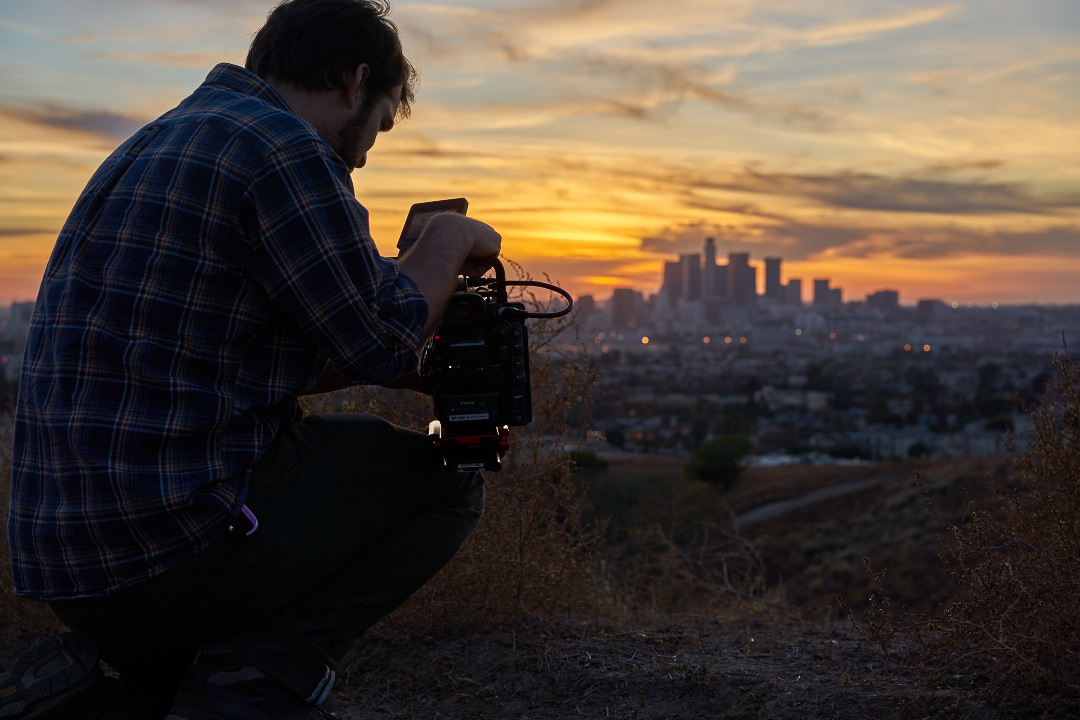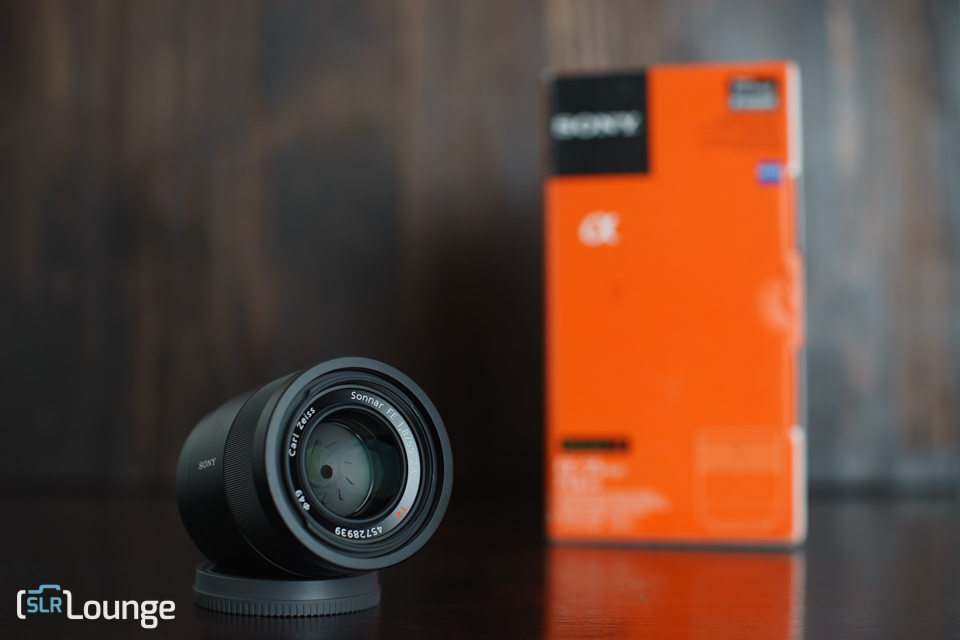The original Sony A7 and A7R were announced in October 2013 along with 5 full frame E-mount lenses, designed for the new platform. One was the 28-70mm variable aperture “kit zoom,” which was quickly dismissed by professionals and serious enthusiasts as cheap, plastic-y and soft. Two were f/4 zooms, a 24-70mm and a 70-200mm. These were found to be able performers, on par with similar offerings from other manufacturers, but for many photographers, it’s difficult to get too excited about an f/4 zoom.
The remaining two lenses were small, lightweight primes, a 35mm, which, at only 120g, took direct aim at the travel and street photography market, albeit with a rather slow (for a prime) f/2.8 maximum aperture, and the standout of Sony’s initial FE mount lineup in many reviewers minds: the 55mm f/1.8. This 55mm was, at the time, an ideal match for the then-brand-new full frame mirrorless bodies; it was small enough to balance well, and sharp enough to take advantage of the A7R’s 36mp sensor. Sony’s first priority back in late 2013 was clearly to keep the new platform small and lightweight, in stark contrast to the big, bulky professional SLR systems offered by companies like Canon and Nikon, while still offering high image quality. I would say ‘uncompromising’ image quality, but most of the lenses clearly sacrificed some measure of performance to remain portable.
However, (spoiler alert) they hit a sweet spot with the 55mm f/1.8. It’s pretty small, pretty fast, and impressive performer. But in the years that have passed since the introduction of the A7 system, Sony has left behind its insistence that their FE lenses be small and compact above all else. Beginning in early 2015 with the 90mm macro and 35mm f/1.4, they have shown that this platform can accommodate the demands of essentially any photographer.
Of course, there is no such thing as a free lunch, and with professional-grade optics came bigger, heavier lenses with professional grade price tags. So, the question that I’ll aim to answer here today is this: Is the three year-old 55mm f/1.8, the one-time darling of Sony fanboys-and-girls, still a relevant lens in Sony’s maturing FE lens lineup, and worth getting?
The full name of this lens is actually Sony FE 55mm F1.8 ZA Carl Zeiss Sonnar T*. It seems that the inclusion of the Zeiss name in this, and the other Sony/Zeiss branded lenses in the range, is more than just a marketing ploy. Zeiss has said that they have taken a role in both the design process and quality control of any Sony lenses baring the Zeiss badge, lending their generations of optical expertise to the final products. Sony is in charge of actually manufacturing the lenses, but the Zeiss influence is apparent in their image quality and performance.
This lens is sharp. Like, really, really sharp, though, it does have some weaknesses, which we’ll get to later in the review, but sharpness is not one of them. It is easily in the same league with the top of the line 50mm offerings from Canon and Nikon, and can compete with the Sigma 50mm Art, and Zeiss Otus 55/1.4. In fact, according to DxoMark, the Sony 55mm, mounted on an A7R surpasses the Otus on a Nikon D800 in terms of sharpness between f/4 and f/8. Although the A7R lacks the AA filter found on the D800, the two cameras use essentially the same sensor. Granted, in this portion of the aperture range, most prime lenses can deliver impressive resolution, but we’re talking about the mighty Zeiss Otus, a 970g, $4,000 lens, compared to the Sony, at 281g and $1000. That’s bonkers. The bottom line is this: if sharpness is your primary consideration when shopping for lenses, this one will not disappoint.
In terms of chromatic aberration, the 55’s performance is more in line with its price, which is to say, pretty good. Especially at wide apertures, closer to the edges of the frame, some purple and green fringing is noticeable, and sometimes difficult to remedy within Lightroom. However, once the lens is stopped down the CA is far less of a problem, and by f/4 it’s effectively nonexistent. This is where I’ve docked the lens it’s 1/2 of a star. If you buy a fast prime lens, you want to be able to shoot it wide open and get great results, and while I wouldn’t say that the chromatic aberration is a deal breaker, the purple fringing can be distracting under certain circumstances. For best results when shooting towards a very bright background, stop the lens down to at least f/2.8 to give Lightroom’s CA correction a fighting chance.
Note that in the following example, the streetlight was off center, and was beyond the targeted focus plane, and the sun was just out of frame. Chromatic aberration correction was turned off in Lightroom. 100% crop:
This example was shot at f/2, in a real nightmare scenario for any lens- shooting almost directly toward the sun, near mid-day. In this shot, I’ve applied Lightroom’s CA correction.
On a related note, flares are present, but reasonable. I’ve yet to find a lens that doesn’t display some type of flare when shooting towards the sun, and this one is no exception, but the Zeiss T* coating seems to do a very good job of keeping these flares under control. There is a slight loss of contrast in the vicinity of the sun, or light source itself, but on the whole, the images tend to retain detail quite well. I sometimes enjoy a big, groovy, 80’s-looking flare when I put the sun in my frame, but with this lens I’ll just have to add that in Photoshop.
I suppose I should also mention the distortion and vignetting properties of the lens. Distortion is exceedingly well-controlled, and DxoMark puts it at 0.4%. Vignetting is present at wider apertures in raw files, but the light falloff is gradual, which I generally find rather pleasing. I won’t spend too much time on either of aspects though, since Lightroom has solved these problems for us! With one click you can easily and automatically correct both of these so-called problems, with almost zero compromise in image quality. If you’re not familiar with the “lens corrections” panel in Lightroom’s develop module, I recommend that you check it out. It is simple, and effective.
Then, of course, we must discuss the more subjective aspects of this lens’s personality. While I don’t necessarily see the trademark “Zeiss look” that so many of their lenses are famous for, I find the look of the lens very appealing. The focus falloff from the tack-sharp focus plane to dreamy, creamy bokeh-land is gradual and subtle, and the bokeh itself is incredibly smooth. Although I think colors are much more dependent on the camera’s sensor and processor than the lens, the 55mm does not seem to skew or distort colors in any way. I shoot raw almost exclusively, and the files coming out of my A7Rii stand up brilliantly to post processing and color grading.
The main attraction of this lens is its performance. Aside from that, there isn’t much to speak of. It does have Zeiss’s trademarked T* anti-reflective coating, which seems to do a great job of assisting with detail, contrast and clarity, and really, if your primary focus is stills, not video, that’s about all you need. Autofocus is handled via a stepper motor, and manual focus utilizes a focus-by-wire system. It’s not ideal, and I think many photographers miss the mechanical focus rings of the past, but it seems that this type of setup is now standard in autofocus lenses. There is also no distance scale or aperture ring. These may have been nice touches, but in practice I don’t find that I miss them. I have my A7Rii customized so that I can change my aperture quickly, and without looking away from the EVF, and the manual focus aids, such as peaking, magnification and a digital distance scale, are effective and easy to use. It does feature weather sealing, so that you can shoot in less than ideal conditions without worrying about it. I wouldn’t pull it out during a monsoon, but there is a tiny rubber ring on the lens mount to ease your mind when it starts sprinkling during your repurposed-fashion shoot in Portland.
Also worth noting is its close focus distance, a very respectable 19.69 inches. While this is not class-leading, keep in mind that this lens is 5mm longer than the crop of other 50mm lenses, making its ability to magnify and isolate small subjects nearly identical.
If you shoot a lot of video, you may need a lens with a distance scale, and a de-clickable aperture ring like the newly announced Sony 50mm f/1.4. I, however, live in Los Angeles, and I tend to leave video to the dedicated video guys. For me, when shooting stills, this lens has every feature I need. There are, in point of fact, no buttons, switches, scales or displays on this lens. It is a small, metal barrel with a focus ring and a removable lens hood. Like every other lens hood I’ve worked with, it can be mounted backwards on the lens for transport; does that count as a feature?
This is a little tank of a lens. I haven’t dropped it, and I don’t plan to, so I suppose that I can’t speak to its durability, but the barrel is all-metal in a nice matte black finish, similar to the Sigma Art series lenses, and the Sony feels similarly solid in the hand. The lens hood is plastic, perhaps to save a bit of extra weight, but doesn’t feel flimsy or fragile at all. As I mentioned above, the focus ring is the only external moving part, so AF/MF is controlled by the camera.
I’ve touched a bit on the 55’s size and weight already, but I’ll give a bit more reference for this mighty little lens. It is 281g, or 0.62lb. That makes it roughly half the weight of the Canon 50mm f/1.2L, and 1/3 the weight of the Sigma 50mm Art. Canon’s (plastic) 50mm f/1.4 USM is closest in terms of weight among it’s peers, at 290g. It is, however, a bit longer than most other lenses in this range at 71mm. Nikon’s 50mm f/1.4D, for example, is only 43mm, but their 58mm f/1.4D is nearly identical, at 70mm long. Again, the Sigma Art lens is the biggest of the bunch at 100mm. If you’re curious where the behemoth Zeiss Otus fits in this comparison, it’s… bigger.
In terms of a real-world experience, I’ve found the size weight to be almost perfect on my A7Rii. I can wear the combination on a strap around my neck all day, with no discomfort, and have no reservations in recommending this as a walk-around, travel photography lens.
Some photographers might quibble that this small 55mm lens mounted on a small A7 series body doesn’t look like a professional-grade camera kit to the untrained eye – perhaps the eye of a client – and I think that this is a fair point. If you’re working for someone who’s accustomed to seeing a Nikon D4S and 24-70mm f/2.8 on set, this Sony system will look like a toy. Whether you should be concerned with this issue is up to you. My feeling is that my portfolio is what gets the job, and the images produced by this lens speak for themselves. Once I’m on set and a client has a chance to see the camera for the first time, I’ve already got the job. I, for one, have no desire to lug around a massive DSLR system just to impress onlookers.
I’ve mentioned the quality of the lens throughout this review, and I honestly can’t find fault with it, either in terms of craftsmanship or polish. Its metal lens mount fits tightly and securely to the camera, the lens hood makes a gratifying clicking sound when locking into place, and the focus ring moves smoothly and gracefully. The Sony logo, Zeiss badge, and lettering designating the aperture and focal length are ever-so-slightly raised for added visceral pleasure. If I go into too much detail on this lens’s quality, I feel that I may drift into grocery store romance novel territory, so perhaps I should leave it with this: it’s good. It’s Zeiss good.
In terms of value, I suppose I should be ready for a fight. At first glance, the price seems like a misprint. Almost $1000 for a standard focal length, f/1.8 prime lens?? Well folks, this isn’t your daddy’s nifty fifty. In fact, Sony has recently released their budget friendly 50mm f/1.8, for $250. So, why do I think that this “slow” prime lens, lacking in features, is worth the price? It’s simple really, and I think Sony absolutely accomplished their goal with this lens – it is small, lightweight, and a stellar performer. Yes, it would be nice if it could open up to f/1.4, but that change would necessitate adding weight and girth, and that extra 2/3 stop would not make a massive difference in depth of field or bokeh. In 98% of shooting situations, f/1.8 is wide enough for me.
When this lens was released, it was your only choice for a standard focal length prime lens. It was either this, a kit zoom, or an f/4 zoom. Since then, things have changed, and more options have become available. There’s Sony’s nifty 50mm f/1.8 for $250, the big, brand new 50mm f/1.4 for $1500, with all the bells and whistles, or this classic (by E-mount standards) 55mm f/1.8 in the middle at $1000. Essentially, if this lens fits your needs on paper, it will meet or exceed your needs in practice.
Summary
I’ll mention now that I have personally owned this lens for nearly 9 months. It was the first lens I purchased with my A7Rii after I made the switch from Canon to Sony, and I have been thrilled with its performance. With the occasional annoyance of chromatic aberration, it has met every challenge I’ve thrown at it.
When I was a Canon shooter, I swore by the 50mm f/1.4 USM. It was sharp enough, and fast enough for my needs at the time. I could rent or borrow a 50mm f/1.2L if I really needed that extra half stop, but 99% of the time, the 1.4 was perfectly sufficient. Now that Sony has released their top of the line 50mm f/1.4, I’m feeling that way about my trusty 55. I’ve yet to play with the new $1500 big man on campus, but early reports seem to suggest that it might be ever so slightly sharper, at certain apertures, in certain parts of the frame, than this 55mm. That’s a lot of qualifiers for a 33% price difference. I didn’t want to make this review a direct comparison between the old and the new, because I think that each lens actually serves a different purpose. If I need the extra wide aperture, or any of the added features of that lens, it exists, and it’s just a rental away.
[REWIND: Sony A7II | Proof Size Isn’t Everything, It’s How You Use It]
So, to answer the question I asked myself when I began this review: Yes, I do believe that this lens is still relevant. For established professionals, who demand that their gear be uncompromising in optical quality, and as versatile as is available, with little regard to price or weight, the new 50mm f/1.4 will probably be the lens of choice. But this 55mm is something special. It’s almost a throwback, as much as a 3 year-old autofocus lens, designed for a mirrorless camera, can be. There are no frills, no added bulk, nothing to distract from the outstanding optics and performance. Add in the fact that it delivers on the original promise of the full frame mirrorless system- that it is smaller and lighter than a comparable DSLR rig, while delivering equivalent (or superior) image quality- and you have a lens that is more than simply relevant, you have a classic.

Get the 55mm Zeiss f/1.8 T* here


